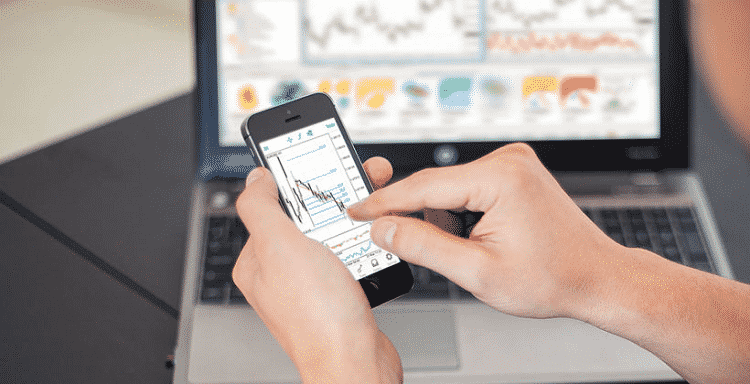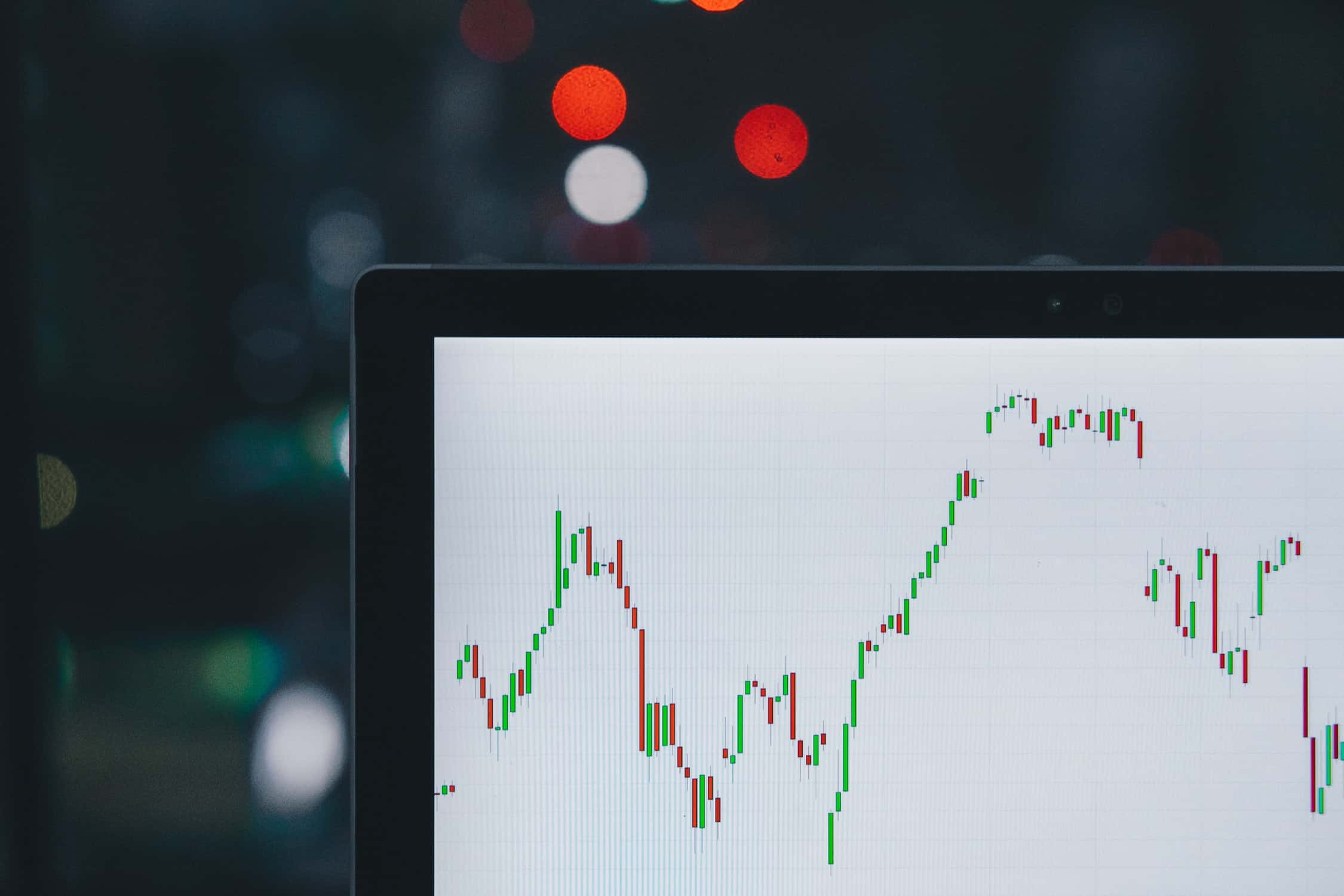Technological advancement over the last few decades has significantly lowered the entry barriers in financial markets.
While large investment banks, hedge funds, and high-net-worth individual investors reigned the markets for the most part of the 20th century, retail traders make up a respectable portion of the total daily turnover in financial markets nowadays.
In fact, according to a BIS Triennial Survey, retail traders account for 5% – or around $254 billion – of the total daily turnover in the Forex market. Access to leverage and margined trading has been one of the main reasons which attracted a large number of retail traders to the market.
Why?
Trading on leverage requires a significantly lower initial cash outlay, aka an initial margin requirement, to achieve a relatively high market exposure compared with trading without leverage.
Before we begin, watch this video that explains what margin trading is:
What are Margin Products and How Do They Work?
Margin trading refers to the practice of using borrowed funds to trade a financial instrument. A trader would borrow the funds from the broker and allocate a portion of his or her trading account as the margin (or collateral) for the trade.
Since traders trade with borrowed money and increase their market exposure beyond their initial trading account, margin trading is usually considered riskier than trading without margin. That’s the reason why leverage and margin are often referred to as a double-edged sword – they magnify both your profits and losses.
To trade on margin, traders need to open a margin account which differs from regular cash accounts used by most investors. Short-selling, for example, can only be conducted on margin accounts as it implies using borrowed financial instruments to speculate on the future fall in their prices.
1. Stocks
When you are trading stocks, one important thing to consider is the use of margin. Margin is essentially a loan that you take from your broker in order to purchase more shares than you could otherwise afford. It allows you to leverage your investment, but it also carries with it a certain amount of risk.
The first thing to understand about margin is that it is a loan. This means that you will be responsible for paying back the loan, plus interest, at some point in the future. The terms of the loan will vary depending on your broker and the specific stock that you are buying, but generally speaking, you will have to pay back the loan within a few months.
The next thing to understand is that margin can be a great tool for increasing your investment returns. This is because you are essentially borrowing money to purchase more shares than you would otherwise be able to afford. If the stock price goes up, you will make a profit on your investment. However, if the stock price goes down, you will be responsible for paying back the loan plus interest.
2. CFD Trading
Are you wondering what are CFDs? CFDs, which stands for Contract for Difference, is a derivative contract where the buyer doesn’t own the underlying asset.
Simply put, the CFD tracks the price of the underlying instrument, and the trader makes a profit on the difference between the opening and closing price.
For example, if the Canadian dollar is expected to rise in value against the Japanese yen, a trader could buy a CFD on the CAD/JPY currency pair and make a profit if his or her analysis proves right.
Short-selling, i.e. selling a borrowed financial instrument in order to profit from a bear market, is also possible with CFDs.
CFDs can be designed to track any asset class and any financial instrument, such as stocks, indices, commodities like gold or silver, and currencies.
Since CFDs are a margin product, traders can trade CFDs on leverage and magnify their trading performance.
However, be aware that not only your profits are magnified, but also your trading losses and makes it easier to blow up your trading account.
3. Spread Betting

Spread betting is a derivative trading product which doesn’t differ much from CFD trading. In spread betting, traders would buy at the offer price if they think that the price is going to rise or sell at the bid price if they think that the price is going to fall, making a profit on the difference between the opening and closing price of their trade.
The spread, which is the difference between the buying and selling price of a financial instrument, represents the broker’s profit and widens with less liquid assets.
The profit of a spread bet is calculated as the difference between the opening and closing price of a trade, multiplied by the bet size (or bet per point) set by the trader.
With most brokers, a point represents the second decimal place of an equity trade (i.e. one cent or penny) or the fourth decimal place of a currency pair’s exchange rate.
Besides the spread and the bet size, spread bets also have a bet duration. However, most daily funded spread bets – which are commonly used to day-trade a financial market – can be left open for days, or even months.
Related: What are Binary Options and How Do They Work?
4. Forex
Trading the Forex market on margin is a widespread practice among retail traders. As we already noted above, trading on margin allows the trader to open a much larger position size than the initial trading account size would otherwise allow.
The amount of margin required to open a trade directly depends on the leverage ratio offered by the broker.
For example, if you wanted to buy $100 worth of currency, you might need to have $1 margin in your account.
Margin can be a useful tool when you are trading. It allows you to open a position with less money than you would need if you were buying the currency outright. However, it also carries with it some risks. If the market moves against you, you could end up owing more money than you originally put up.
Before using margin, it is important to understand the risks involved. You should also have a plan in place for how you will manage your margin if the market moves against you.
If you are new to forex trading, or if you are considering using margin, it is best to get an introduction to forex trading to understand the risks and to develop a trading plan that suits your goals and risk tolerance.
Needless to say, even the smallest price tick which goes against the trader could lead to a margin call and wipe out the entire trading account.
Example: To get a $100,000 market exposure with a 400:1 leverage, you need to have only $250 in your trading account, allocated as the margin for the trade. If your total trading account size is $1,000, the remaining $750 will act as a free margin which can be used either to open new margined trades or to withstand negative price fluctuations on open positions. A margin call would occur when your free margin falls to zero.
How Does Leverage Work in Forex?
Leverage can be one of the best tools to maximize your trading potential in the Forex markets. Many Forex accounts allow you to buy on margin at ratios up to 50:01, which means you only have to put up $10,000 to control a position worth $500,000. How crazy is that?
For instance, if you wanted to do this you would need to open an account with a licensed online broker that offers these ratios and opt for the leverage ratio you want. In order to use it efficiently, it’s important to choose the suitable leverage ratio according to the asset you want.
The amount of leverage provided can have some of the following ratios: 50:1, 100:1, or 200:1.
These ratios typically depend on the broker you’re trading with, the jurisdiction of your location, as well as on the total volume of the open positions. Before you start trading on leverage in Forex, you should learn the basics:
- Balance: Your balance shows the size of your trading account.
- Equity: Equity shows the value of the account.
- Margin: Margin shows the blocked collateral.
- Free Margin: Free margin shows the available amount.
- Margin Level: The margin level defines the risk (a lower level is preferred).
By understanding how leverage works, you’ve already minimized the risk. Find out the leverage ratio that fits your trading style and design a proper money management plan to help you use leverage in a responsible way.
Different Ways to Use Margin Trading
1. Intra-day trading: You can use margin trading for intra-day trading, which means you can open and close your position within the same day. This is a popular way to trade because it allows you to take advantage of short-term market movements.
2. Swing trading: You can also use margin trading to swing trade, which means you hold your position for a period of time before selling. This is a good strategy if you believe the market will continue to move in your favor but you don’t want to risk a large loss if it turns against you.
3. Arbitrage: You can use margin trading to take advantage of price differences in different markets. For example, if you think the price of a stock is going to go up in the short term, you can buy the stock in one market and sell it in another market where the price is higher. This is a riskier strategy because it requires you to predict the direction of the market correctly.
4. Hedging: You can use margin trading to hedge your portfolio, which means you can reduce your risk of losses if the market moves against you. For example, if you own a stock that you think is going to go down in value, you can sell it short using margin. This will offset any losses you might make on the stock.
5. Speculation: You can use margin trading to speculate on the future direction of the market. This is a riskier strategy but it can be profitable if you are correct about the market’s direction.
Margin trading is a versatile tool that can be used in a variety of ways. These are just a few of the most popular strategies. Talk to your broker about other ways you can use margin trading to meet your investment goals.
Leverage Trading: What You Need to Know Before Buying on Margin
Leverage trading, also known as trading on margin, is a widely-used practice that allows you to trade without paying the full amount of the position.
While I have used leverage trading in the past, it has worked both for and against me at times. Typically the former, as it is a really risky thing to do but you need to understand leverage trading to help you fully immerse yourself in the stock market.
Leveraged trading is available for all asset classes and it is can be one of the most efficient ways to use your capital while aiming for more profit potential. It can also prove to be very dangerous — especially for those new to the stock market.
Let’s discuss more about leverage trading and buying on margin and see how it works, and why it may not be the best idea.
What is Leverage Trading?
In the stock market, leverage trading is using borrowed money you get from your broker to increase your position size on the desired asset.
For example:
Let’s say you’re a big Apple fan, the stock is booming and you have enough knowledge to invest in it. You’re 100% ready to proceed but you don’t have enough capital in the account to buy $10,000 worth of stock. Leverage trading makes it possible to invest only around $3,000, buying the rest of $7,000 in margin.
Since leverage trading works like a loan, this means you have to pay it back at some point, with interest. This makes it carry a high degree of risk, given the fact that there’s always the possibility for the trade to go against you. If the stock price moves against you, you'll still have to pay the amount back that you borrowed.
While leverage is applicable to all asset classes, such as stocks or commodities; it has its pros and cons, which we will discuss next.
Pros and Cons of Leverage Trading
It's important to understand the benefits and downsides so you can make a better-informed decision about buying on margin.
Pros
Minimal Capital Exposure: The main advantage of leverage trading is the possibility to substantially increase the returns you obtain on an investment. It allows you to trade at a professional level with minimal capital exposure.
Profit Potential: With the right leverage ratio, a good strategy and a solid risk management plan, both beginner and experienced traders can savor the dreamed profits.
Cons
Your Trading Account can be Wiped Clean: If you’re not conscious of the severity of the risks posed by leverage and how easily it can backfire, it can turn into one of your most regrettable experiences.
Margin Calls: Just as leverage can move strongly in your favor, it can equally move against you when you call a position incorrectly. This is arguably the biggest disadvantage. In some cases, in order to ensure customer protection, certain financial authorities even limit the leverage. For example, in the United States, a 1:50 ratio is the norm.
Ready to Trade on Margin?
Margin products allow you to significantly increase your market exposure, even with a relatively small trading account. However, the increased exposure can quickly lead to a margin call if you don’t fully understand the relationship between the margin, free margin and the balance of your account. Since trading on margin carries a high risk, always use stop-loss orders to prevent large losses and protect your trading funds.
Leverage trading is a common practice suitable for all asset types including stocks but it is heavily-used in Forex trading. Buying on margin provides you with the ability to bring you the rewards you’ve been dreaming of, whilst allowing you to manage a capital that exceeds your initial deposit. However, it can also work against you, especially if you're a beginner at trading on margin.
To minimize the risks of leverage trading, pick a solid trading strategy, the appropriate leverage ratio and create a trading plan to follow that encompasses risk management techniques. When done right, leverage trading can be the key to your financial success.








